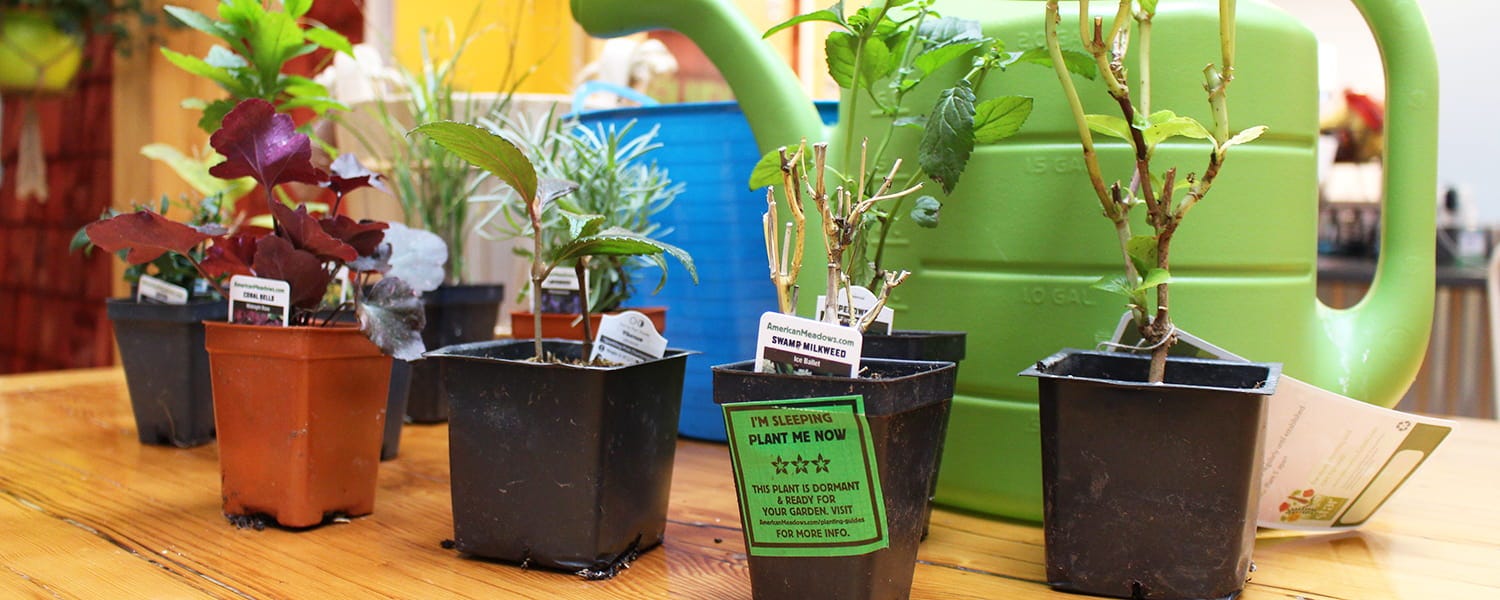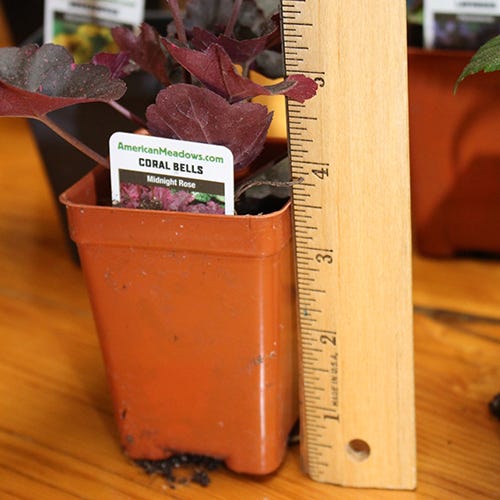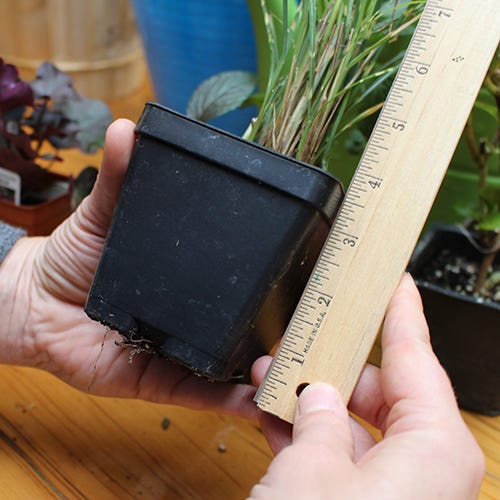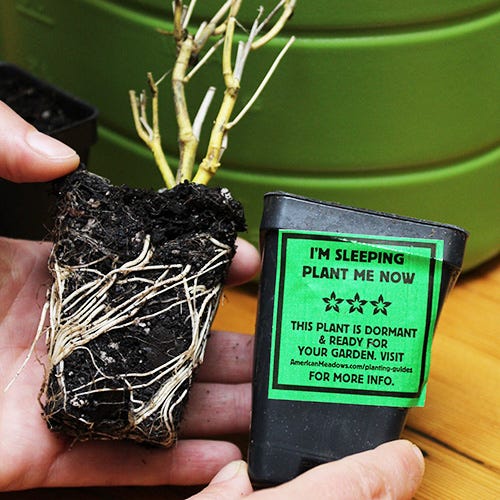At American Meadows, we ship plants in pots, as bareroots, or as bulbs, tubers, or rhizomes. Each plant has a different form and life cycle, and our goal is to ship your plants at the right time and in the form that causes the least stress to them. By minimizing plant stress, and transplant shock, plants can adapt and grow more quickly and thrive in your garden, so you can grow with confidence.
How do you know how your plant will be shipped? On any product page, when you add to your cart, you will see the quantity in Pot, Tray, or Bag. When you order Pots and Trays, you are ordering potted plants. When you order Bags, you are ordering bareroots, bulbs, rhizomes, or tubers. Also, on each product page in the "Planting Information" chart, the "Ships As" box will tell you the form of the plant.
Read on for details about how we ship our plants.
These plants are potted in a planting mix and have established root systems.
Our young plants are at the right stage to transplant with minimal stress, and when planted in the right place, they can take off with youthful vigor. Young plants with healthy roots, like the ones we ship, often result in better growth over time compared to larger nursery pots.
The most important part of the plant is its root system. Healthy roots are the foundation of a healthy, vibrant plant. You can be confident that your new plants have healthy root systems, and are ready to spring to life once they're planted in your garden.
Potted plants can be in different growth stages when they are shipped, depending on their life cycle and the time of year.
The roots are the most important part of the plant! To determine plant health, the best thing to do is to check the roots for healthy white fibers. White roots means that the plant will continue to have healthy growth in your garden.
You may receive potted plants or shrubs with fresh leafy growth.
- Plants are typically pruned before shipment to reduce damage in transportation, to encourage root growth, and to help encourage fresh new growth when planted in your garden.
- Plant these as soon as possible. These plants have already broken their dormancy and begun to grow.
You may receive dormant plants, with no top growth, or dried-out foliage.
- At the beginning of the spring season, some plant varieties, especially later-blooming perennial flowers and grasses, may be dormant.
- In the fall, you may also receive plants that have already begun their winter dormancy period.
- You will see a dormancy sticker on your plant pot, and find healthy white roots beneath the soil.
- Plant dormant plants right away, as they do best when they can wake up and establish in your garden. You don't need to wait until after the last frost date.
- Avoid overwatering until you see active growth. Take care not to damage any small emerging shoots.
Notes On Shrubs
You may receive shrubs with bare twigs. As with perennials, potted shrubs are generally pruned before shipping. In spring, it's common for shrubs to wake up slowly from winter dormancy. In fall, some plants may already have entered dormancy for the season, depending on their life cycle and the time of year.
When looking for signs of health, check for healthy roots. You may see green buds. If you make a very small scrape of the bark with your fingernail, green tissue under the bark is a sign that the plant is healthy.

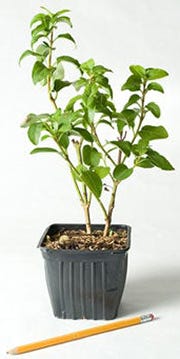
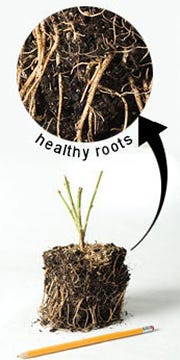
In general, perennials sleep, creep, and leap: In the first season, they establish strong root systems and foliage. In their second season, they creep, growing larger than the year before and continuing to strengthen their roots. In the third season, they leap, maturing into their full size once fully established.
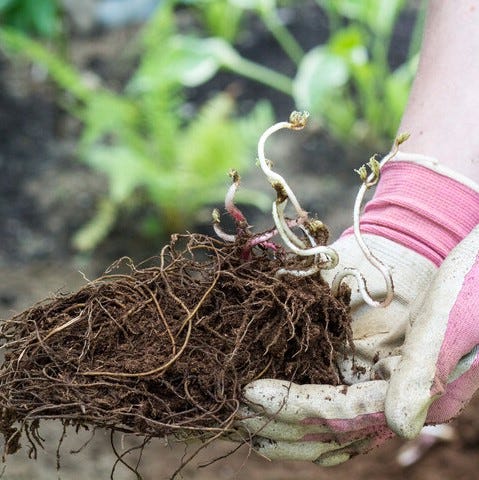
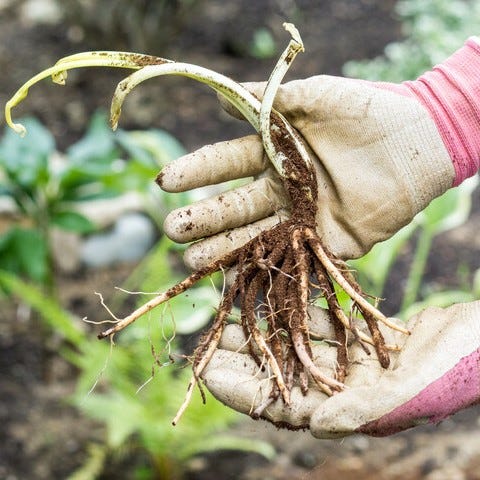
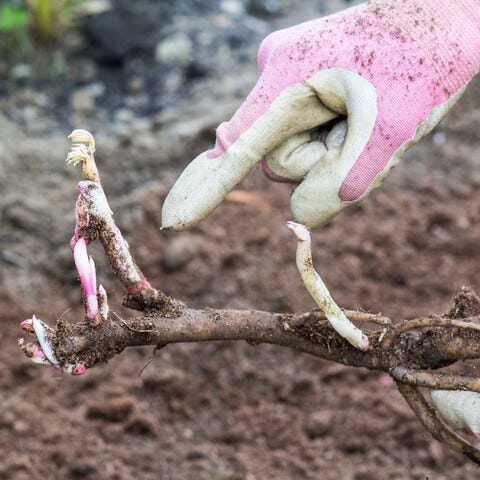
Bags of bareroots arrive in moist peat moss packing material.
- Keep the peat moss moist and wrap the roots loosely to prevent them from drying out until you plant.
- You may see small buds at the crown (where the roots meet the top growth) or on the roots themselves.
About Bareroot Plants
As noted above, the most important part of the plant is its root system. Healthy roots are the foundation of a healthy, vibrant plant. Bareroot plants do not have top growth, which reduces the opportunity for stress and damage in shipping and transplanting. You can be confident that your new plants have healthy root systems, and will grow vigorously once they're in the ground using stored energy from the previous season.
These plants are dug after they go dormant in fall. The soil is then washed from the roots and they're packed in moist wood shavings, shredded paper, or peat moss. Historically, most mail-order plants were shipped as bareroots, growing into vibrant, healthy plants.
About Woodland Wildflowers
These bareroots are very small - as nature intended! Many of our woodland wildflowers are native, wild-collected plants. We're able to offer native wild species not cultivated for the trade, and these bareroots are smaller than those of cultivars or hybrids.
To see more photos of bareroots, check out our Visual Guide To Bare Root Plants.
"I purchased several bareroot perennials from American Meadows this spring. I was impressed by the quality of the product I received. Most bareroot plants I order online [from other sources] were quite small and took quite some time to establish. These were all quite large and in great condition. The ones I planted a couple of weeks ago are doing great."
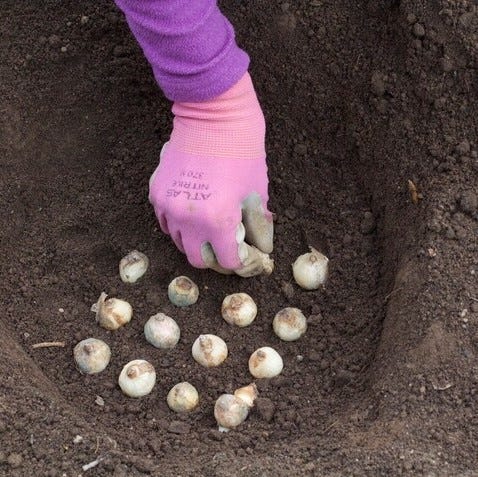
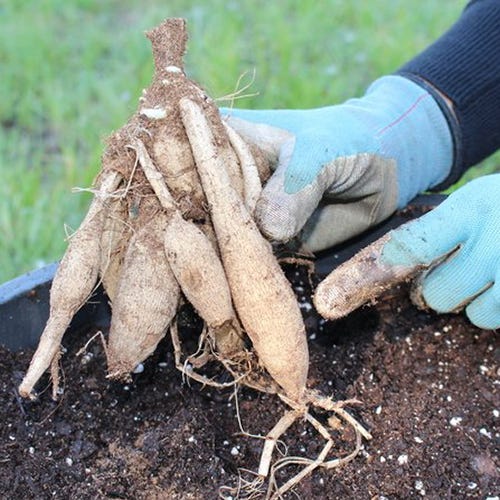
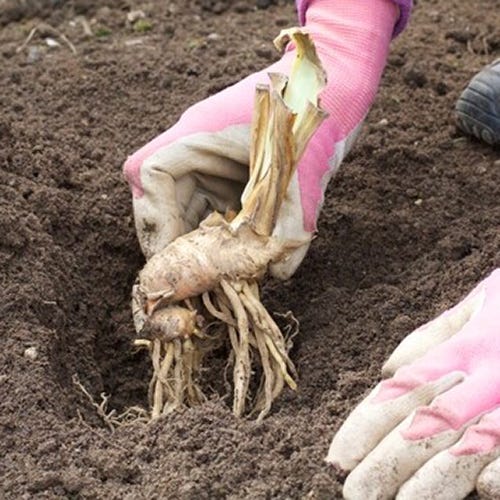
Bags of bulbs, tubers, and rhizomes arrive in moist peat moss packing material or in paper bags.
- If packed in peat moss, keep moist and wrapped roots loosely to prevent them from drying out until you plant them. In general, before planting, bulbs should be stored where they will not freeze, at around 45°F. We recommend a garage or basement.
- Healthy bulbs are firm without soft or mushy spots. Some surface mold is normal and will not affect growth.
- You may see small buds at the crown of tubers (where the roots meet the top growth). Bulbs may sprout in the bag if temperatures are warm - just be careful not to damage the sprout when planting.
About Bulbs, Tubers & Rhizomes
Some plants survive winter by storing their energy in underground bulb, tuber, or rhizome structures. You'll often see these terms used interchangeably, and we typically refer to them as bulbs on our site.
- Tulips, Daffodils, Alliums, and Hyacinth are examples of fall-planted bulbs. Gladiolus and Elephant Ears are examples of spring-planted bulbs.
- Bearded Irises are popular flowers that grow from rhizomes.
- Dahlias are popular flowers that grow from tubers.
The plants do not have top growth, but these underground structures hold all of the energy and information a plant needs to grow vigorously into a full-size plant once they're in the ground. Typically, most flower bulbs and tubers grow into their full mature size in just one growing season.
Like bareroot plants, these are dug after they go dormant in fall. The soil is then washed from the bulb, tuber, or rhizomes, and they're packed in moist wood shavings, shredded paper, or peat moss.

Meadowscaping Makes It Better. Let's dig in together!
We promise the products you purchase from American Meadows will be of the highest quality and delivered in conditions that guarantee optimal performance. If you followed our planting and care instructions but didn't succeed, our Dig In Guarantee applies for up to a year from delivery.
